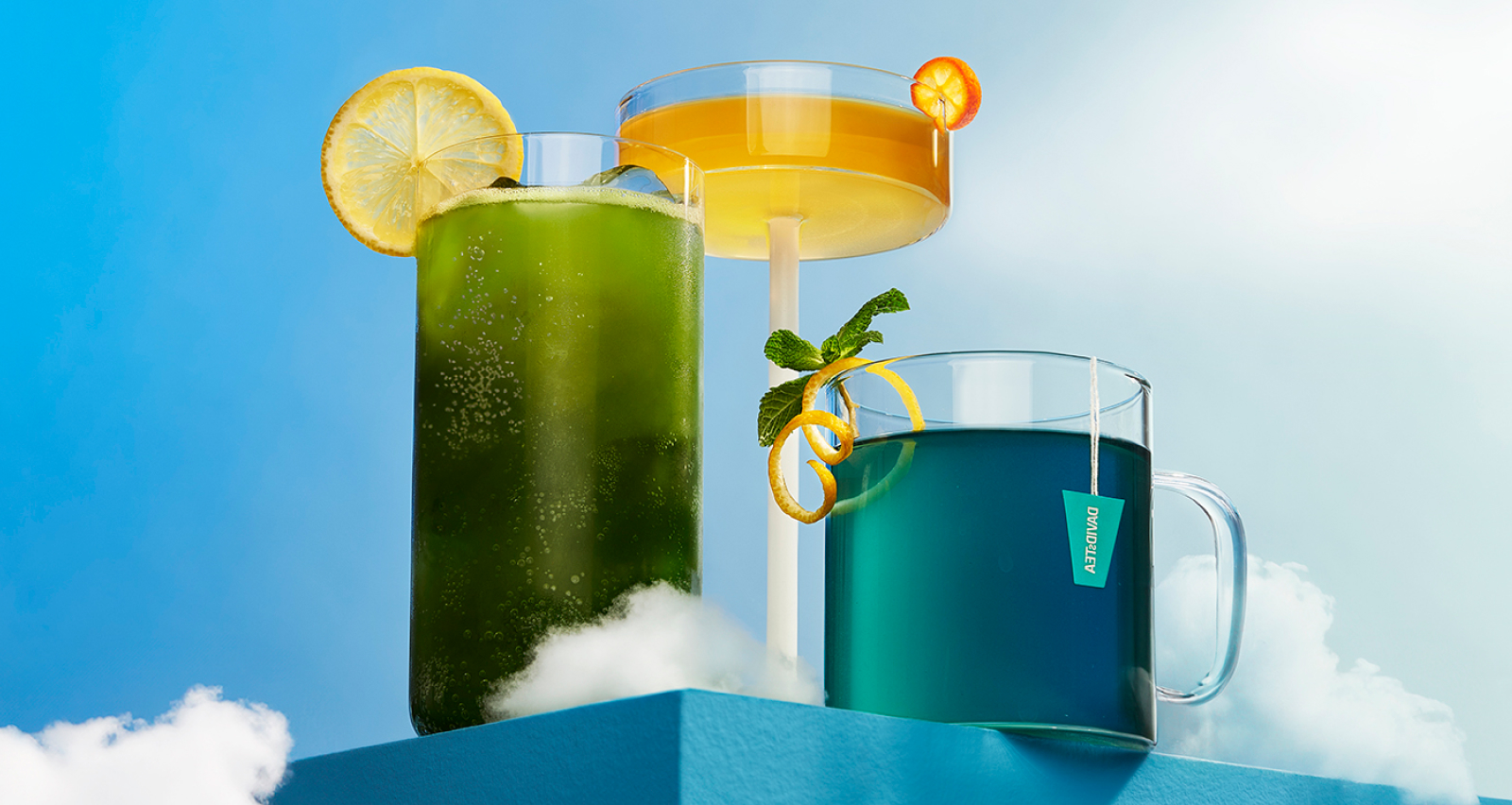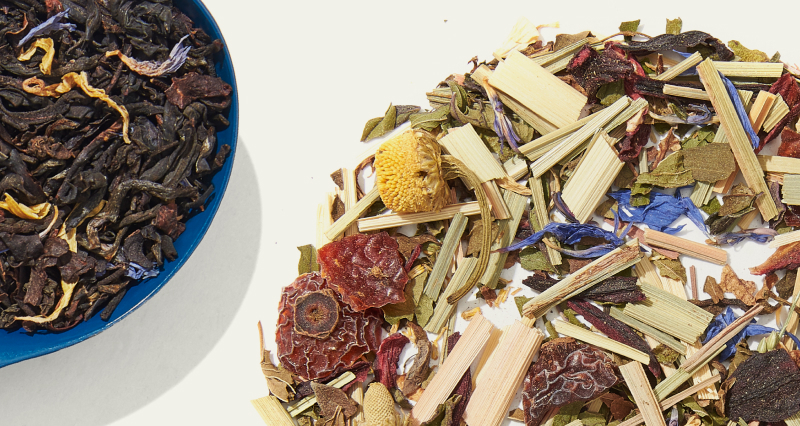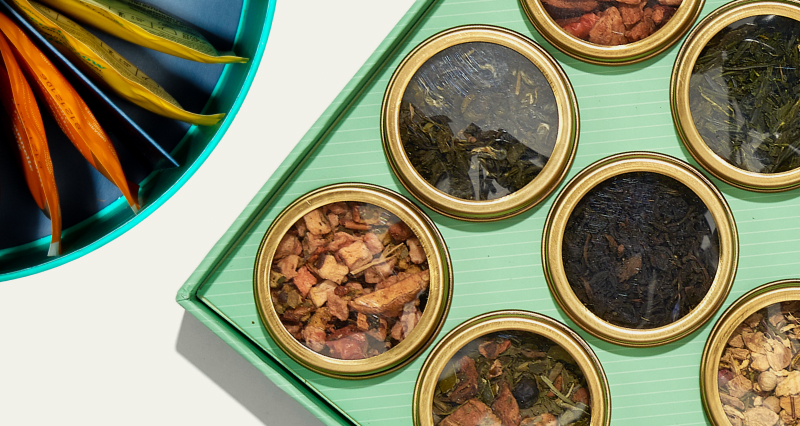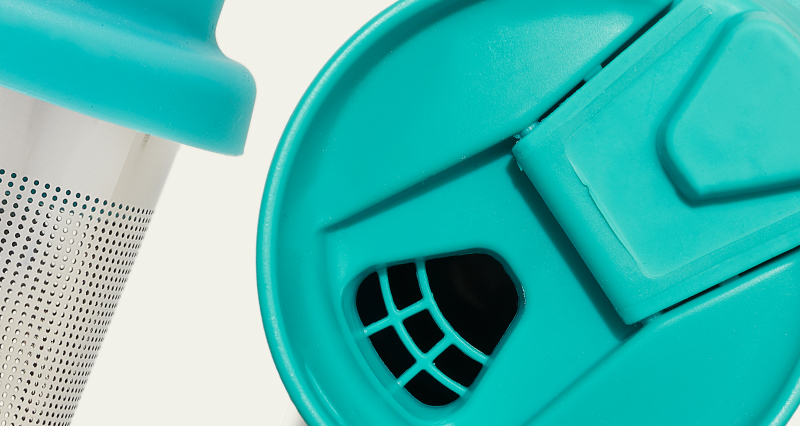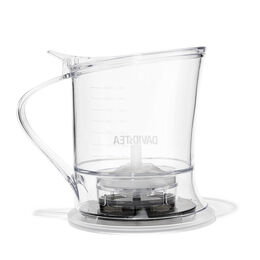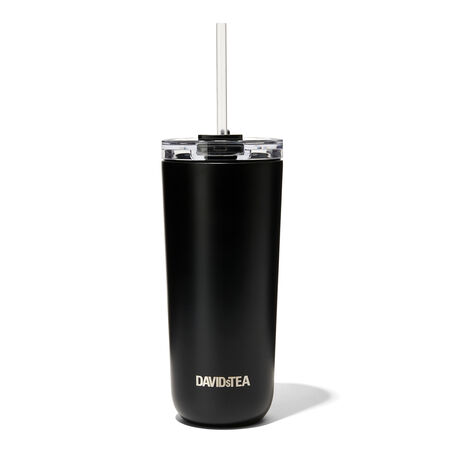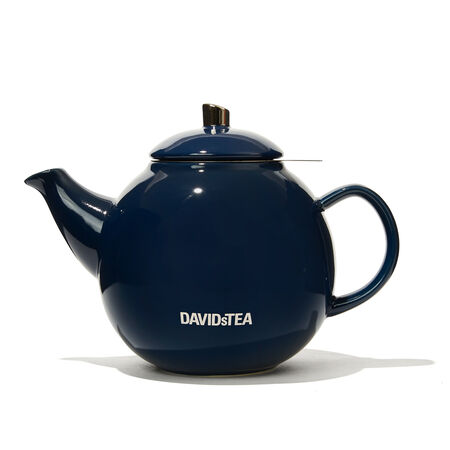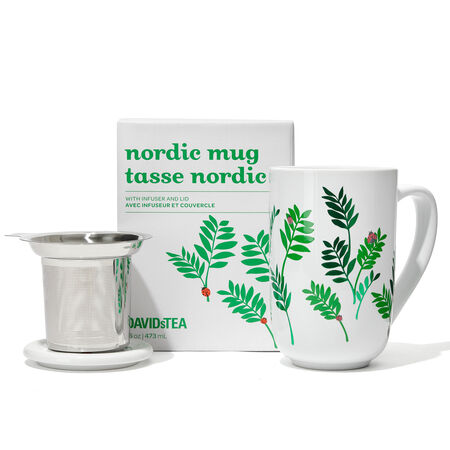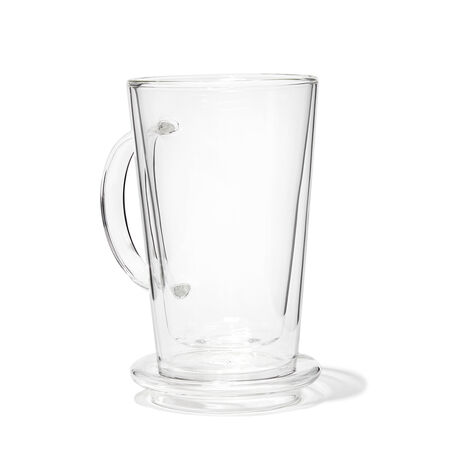season 2 | ep. 6
does water type
affect tea taste?
with Ravi Pillai

steeping together podcast
- season 2 | Ep. 6
Does water type affect tea taste?
with Ravi Pillai
episode transcript
Marika de Vienne 0:18
Welcome, everyone to a special mini episode of Steeping Together, where we explore a specific topic within the vast world of tea with a tea enthusiast. I'm your tea-obsessed host Marika, and I cannot wait to dive right into today's topic. Now we all know that without water, there would be no tea. Seems obvious when you think about it. But most of the time when we discuss steeping, we talk about the origin of tea, steeping time, analysis of the leaves, and somehow always neglect the importance of the water we use to make tea. Today, Ravi Pillai is here to give us a breakdown about what we should know about the water we use to make our most beloved beverage. Welcome, Ravi!
Ravi Pillai 1:03
Thank you, Marika. Really feel so privileged to be invited to your program again, I'm really excited and looking forward to our conversation.
Marika de Vienne 1:11
Ravi the privilege is all mine. Trust me. I was so delighted by our first episode with you on how to become a professional tea taster. I could not think of anyone better suited to the task to discuss today's topic than you, honestly. So thank you so much for being here.
Ravi Pillai 1:32
Thank you, thank you. Such a compliment, such a compliment.
Marika de Vienne 1:35
I mean, as I said before, Ravi, you're a pretty heavy dude, right? 35 years experience in the tea business, from everything from plantation management, to quality control, to being on the board of so many tea associations, you have seen from plant to cup, so many different aspects of the world of tea and I want to talk about water today, I want to get more information about water because it is the thing that makes the cup of tea. Wouldn't you agree?
Ravi Pillai 2:10
Definitely. Definitely, and also I must admit, I love the way you choose your topics.
Marika de Vienne 2:18
Aw thank you!
Ravi Pillai 2:19
It's really meaningful. I mean, it's really meaningful and with deep reflection, you know. Because to me, the topic water and steeping, even when you mentioned this a while ago, on discussing this, I've been like, you know, thinking over and I find them so inseparable. And very defined to combining or bringing these two principal elements together, especially as being contract, conceptual characteristic, it means differently, and yeah, yeah, there's certainly sort of a hand in glove scenario.
Marika de Vienne 3:00
Yeah, it's peas and carrots, hand in glove, like you said, they are inseparable, they are necessary. And I think, you know, we just don't talk about it enough. Because I think I hear a lot of times people say, water doesn't taste like anything. And it's the most annoying sentence to me in the world Ravi, because to me, water has a profound taste in and of itself, depending on where it's from. And so invariably, it's going to affect the cup that you steep.
Ravi Pillai 3:33
I'm no water scientist, neither do I want to talk about laboratory analysis of water. I look at water as a basic requirement that has no nutrient facts or specs, colourless, odourless, as we said you know, but an important ingredient to the steeping process. And I, I really like to talk along the knowledge and my experiences over the years in infusing leaf styles and types of tea whether at work, at home or travel. And moreover, my travel experiences, which has really exposed me to understand these elements differently. Really how it plays an importance in brewing, because to a tea drinker, the significance of water should be considered extremely crucial. Whether you pick a pure straight tea or herbal tea, or for that matter a value-added multi-ingredient blend, and irrelevant of steeping it hot, cold, iced, we need to recognise that water represents 90% of this beverage, or what you consume, unless otherwise you're making something like a latte or something, which still can contains a minimum of 40% water. Water milk ratio, you know? So that's the only difference that I could think of. And again, what is milk? 90% water? So if you do the math, invariably how you use your water is of extreme importance. Imperative, I would say.
Marika de Vienne 5:25
Yeah, we're not going to get into the exact math, as you say, of like, this is the chemical breakdown of the water and this is the optimal water you need to use. I agree with you. I agree with you. I just think…. I would like you to at least shed some light for me on this essential part of the steeping process. So my first big question is tap versus spring. So I've heard that if you have high quality tea, and you want the ultimate steeping experience, and you're an absolute purist, when it comes to your teatime, spring water is the only way to go and tap water is for the ignorant. No other way to put it! There's a big debate about what type of water you should use. I have my own opinions, I'll wait until the end. What do you have to say when it when we talk about tap versus spring?
Ravi Pillai 6:26
It's a very interesting parallel that you are placing. It kind of demands an analytical observation with a critical assessment to this comparison. Because technically speaking, finally, it is spring water that spills out of a tap. Nevertheless to your point, independently, tap water in simple terms is common water that runs off a faucet at home. Now, this is a treated water, because of the natural contaminants or pollutants in it, in order to make it safe to consume. And as we know there are you know, a variety of chemical treatments or may I say permitted chemical treatments, I mean, chemical sounds so scary these days. And with the addition of salts, inorganic coagulants, with various binding properties, you know, to eliminate these impurities, you know, or to stabilise the water, to stabilise the alkalinity or acidity levels, the pH values. So, this is what these additions do. And of course, water that runs through our tap is very pertinent to its natural profile, globally of its origins and source. It could be a hemispherical origins, tropical origins, then again you have the sources of collection, can be collected off surface water, off groundwater. These play a major part in the profile.
Marika de Vienne 8:08
Yeah, I've always… I've only noticed that when I've travelled, but water in Montreal does not taste the same as water in New York, does not taste the same as water in Vancouver and we're not even not, you know, far apart. But it's different tap water.
Ravi Pillai 8:22
Exactly what I mean. Water generally that is supplied to community of inhabitants in any particular residential area is dammed. You know, after tapping the source, is dammed, which then creates a reservoir, stocked in tanks, treated and then fed into homes through the normal municipal water system lines, which is mostly like the pipe systems and a range of materials. You know, the PVC is the galvanised copper, brass, you name it, now because the lesser used cast iron systems you know. Even others too you know, there's so much buildup of slime and grime. And which of course necessitates the addition of these treatments and the coagulants. So water from your faucet or tap water generally tends to be lower in mineral content. Because of these procedures, you know, you get the sedimentation procedures, you get the filtration and it's an addition of these salts, coagulants, invariably condenses the mineral capacity. That’s tap water. Spring water, on the other hand, is a source of groundwater, which of course, in reality becomes surface water at some point. But it is a resource of freshwater rich in mineral content. Particularly, magnesium, calcium, potassium, sodium, and this is really a great source of drinking water. My personal experience, I would like to say in living on plantations, high up on the mountains where spring water is directly tapped and dammed into reservoirs. Now, when I say, I didn't want to get you to understand the wrong notion, because when you say dammed, I don't want you to think like the Colorado dam or something, these are small reservoirs on the estates, not more than 45,000 or 50,000 square feet. So it's you know, dammed and then fit into a stock tank, and direct to the supply system, directly feeds the residential dwellings. Not even treated. So the maximum that we would treat would be boiling, and still, still you feel the heaviness, you feel the coolness, there is a complete different sensory sensation there. You know, I know you are a person who told me you go and see family in Denver and things. I have drank water in Denver, which is of course in the city, but still you feel difference. Difference to a water that you just take off a tap or something. So that difference, that heaviness, that note you get the minerality you get is a complete different significant phenomenon compared to just tap water. And I don't know whether you have even experienced these clay jars that they store water. And that's another thing, even if you boil and store it in a crater, you get this difference, you get coolness that minerality that comes, I don't know whether the clay that they use has this components, but it does give a difference. And so in simple expression, this is best how you could distinguish between tap water and spring water.
Marika de Vienne 11:50
It was explained beautifully. That does not mean that it's simple at all, I think my brain is already just crammed full. Because what you've spelled out for us is the thousands of factors that will affect the water you consume. Be it from your tap, be it from a spring, has it been put in a reservoir? How long has it been in that reservoir?
Ravi
Absolutely, yes.
Marika
What chemicals have been added in order to protect us from other bacteria or harmful pathogens that could be in the water naturally occurring? And how does that affect the flavour of the water?
Ravi Pillai 12:30
I mean, never think about it when we open up a faucet or whatever. I don't like to use the term bottle because that is not for me. But when you take water and use it, we don't think of all this.
Marika de Vienne 12:43
No. And ultimately if those things affect just the water itself, it will invariably affect the cup that you're going to make. Now I don't want to say that I expected a clear-cut answer from you. Because I didn't. Because I feel like you always take every question I ask, you give the full nuance, the full picture.
Ravi Pillai 13:06
I hope I gave some, some essence to what you want.
Good, good.
Marika de Vienne 13:09
I think so. All right. So I don't know if we'll get anything concise this time, but we're going to try it out anyway! Okay, I have always boiled my water completely, and then let it cool to certain temperatures when I want to steep certain teas because as we well know, black tea steeps more flavourfully at a certain temperature, you don't want to burn leaves on your green tea, so you want to use a lower water temperature, but the way I learned to do it and will probably always do it is to boil my water, let it cool. And then steep. There are a lot of kettles on the market though now that allow you to steep your water up to a certain degree up to 65, 75, 80, 90. So that you can then steep these teas. I have again my own opinions on this water boiling practice. But I wanted to know, in your opinion, which is best?
Ravi Pillai 14:13
Now that's seemingly broad, but appropriate evaluation. See, there's a practical aspiration, a technical aspiration in seeking a very realistic measurement. And it can be achieved in many ways. Let's look at it step by step. So to begin, boiling point of water changes with altitude. Because atmospheric pressure changes with altitude, you feel the variation you sense the variation. Now boiling is the agitation of molecules at a vigorous momentum. Obviously again with rising temperatures. Interestingly, now how did we as a whole, as great purveyors of industry, happen to define a boil or determine which temperature is ideal for a differently processed tea?
Marika de Vienne 15:17
I've never asked myself the question and I could not be more excited right now.
Ravi Pillai 15:22
Exactly! Let's take a quick little backtrack. Fascinating. The dynasty of Emperor Shennong … Do you know who… ?
Marika de Vienne 15:31
Yeah I'm a tea nerd, so I know who Emperor Shennong is! The great granddaddy of tea! Exactly, the father of the tea world.
Ravi Pillai 15:38
The father of the tea world. He enjoyed the tea, or he enjoyed the taste, mythically, when a leaf fell by accident or he came across this leaf sinensis whilst he was working in his herbal routine. He enjoyed this taste of the boiling water with the leaf. There is no sighting to steep times, leaf styles, water temp, none of that. Later on for a variety of causes, storage, travel, gifting, separate and distinct processes were implemented over many periods. And this brought about a necessity of exploring the ideal water hotness for extraction before defining temperatures. So it is essential to identify the purpose, the environment and the material before deciding upon the temperature and how we want to achieve it. Temperature is specific. Sure, it's important, but detail. So you got to first identify your objective before deciding how you want to accomplish it. You need to factor in origins, altitudes, hemispherical location, geographical location, type of process, style of process, and then decide on the hotness of your water. I still didn't mention the word temperature, talking of hotness.
Marika de Vienne 17:09
Right, yeah it's interesting that you've made that distinction already.
Ravi Pillai 17:13
Look at leaf styles and makes. For example, a Bai Hao Yin Zhen, or a Bai Mu Dan.
Marika de Vienne 17:18
Right a white tea, either Bai Hao Yin Zhen is mostly buds, Bai Mu Dan is leaves and buds.
Ravi Pillai 17:25
So you just think of what I was saying. Or perhaps a twisted white leaf from Nepal, Africa. Origins again, an oxidised or non-oxidised or semi-oxidised for that matter. Bald profile, strip profile, steamed or pan-fired, large leaf, defined leaf. Then are you preparing a brew for leisure at home, on the go? Is it a full leaf profile, tea bag for the convenience grab-and-go seekers? Is this intent to steep the tea for consumption and enjoyment? Or is it for an evaluation of comparison on consistency, detection, assessment. You need to identify the intention, for those who are not very familiar with parameters or environmental factors then my advice would be: begin with the general guidelines. Like, three minutes at 175 degrees or whatever. So this is what I generally look at, how I see it. Now I personally more than often use the boil and let cool.
Marika
Boil and let cool, right.
Ravi
I skip on many parameters. You need to understand and read the variation or the fluctuations of the water that time. Biosensors, but I want to share one fundamental piece of information, we all need to acknowledge that tea is, has been served and consumed for leisure, apart from all the wellness aspect or the medicinal values it carries. You know, for over centuries, tea has been the comfort potion to the rich, the poor, the tired, the broke, the sick, the hungry, you name it. To me, we should minimise, if not alleviate confusion from the mindset of potential consumers.
Marika de Vienne 19:36
Ravi, I appreciate you for so many different reasons because, A–you've made me consider several things with what you just said. First of all, when I’m making myself a cup of tea, instead of being bogged down by the details of every single step first I should establish what my goal and purpose is with this tea.
Ravi
Absolutely.
Marika
Am I drinking this to treat myself right before I, you know, sit down and watch a movie? Am I on the go? Is this cup for me? Is it for somebody else? Is it going into a teacup, is it going into a coffee mug, is it going into a thermos? Where am I in the world? Am I here in Montreal or am I visiting my husband's family in Colorado? All of these things go into it.
Ravi Pillai 20:22
Exactly. Use your senses, your comfort zones, make it possible and achieve the desires of joy.
Marika de Vienne 20:31
I love it because you're putting to light, bringing to light factors that I think subconsciously I was aware of, but I've never really thought of them really consciously. And the more you were listing out those factors, I started getting a mild feeling of anxiety because I was like, Oh my God, there's so many things that I don't take into consideration that I should and then you finished it with, “But you should be enjoying yourself.” You need to enjoy yourself!
Ravi Pillai 21:02
Start lookin at the simplicity. We are getting too technical.
Marika de Vienne 21:05
Yes. Trial and error. Start with the recipe. 75 degrees for six minutes, is that the recipe? Do the recipe and if you don't like it, change the parameters of the preparation.
Ravi
Totally agree.
Marika
Well that's incredibly liberating. Incredibly liberating, because it feels like we get bogged down with the “if you're not doing it this way, you're not doing it right.” There's an incredible amount of judgement out there with well, you're not making a proper cup of tea if you don't follow x-y-z parameters. But I'm happy, I mean I'm not gonna lie, I'm happy that you and I are both in the team of boil and let cool. I mean, I always prefer…!
Ravi Pillai 21:47
I always prefer that, but at times I stick to temperature as well. But the preferable method for me is boil and cool.
Marika de Vienne 21:52
Exactly. And it's a personal choice, correct?
Ravi Pillai 21:55
Definitely. And I also must add to that. In boil and cool, there is a reason for boiling. As we always say boil your water. We touched on impurities at the beginning of the program. So if you boil your water and when you say boil for impurities, there is a certain temperature you have to reach. So if you boil your water, we are lucky and in a place like where there is glacial water and things. It's more or less clean and pure. But I'm looking at a global view.
Marika
Agreed, yeah.
Ravi
So if you boil your water to 170 or something, how sure are you that you’re drinking pure water, clean water? So that's another important factor to look into. So these are important things that we need to consider before we step on what we're looking at.
Marika de Vienne 22:45
Yeah, and especially since we do have a global listening audience. You know, we can't always, we have to try and speak to everyone and say look at where you are geographically. If you are not certain that your water is totally pure or completely clean, boil it, boil it that is the safest, healthiest way to drink your water or your tea or your coffee or anything. The last thing I wanted to touch on with you Ravi, was the steeping method known as cold brewing, which is to put your tea leaves directly in cold water and let it steep for a few hours, overnight, however long the steeping process is required to bring out the full flavour of your tea. Now, I love cold brewing, I think it makes a deliciously refreshing cup, I feel like I always get the full potential of the leaf when I cold brew, I see all of its qualities and its little quirks when I cold brew. It gives you a very different picture than when you've added boiling water to the leaf. So it's one of my preferred methods. It's the only brewing method I can think of off the top of my head where you're essentially not manipulating the water in any way. You know, so I don't know what your thoughts are on like, on that, I just, I put it to you like what are your thoughts on the water and cold brew and the steep? Like I just want to let you talk about that.
Ravi Pillai 24:16
I'm more a hot mode person. I prefer my tea hot all the time. But there's this belief from studies that cool brew technique and extract more nutrients from the tea leaves. Now the physical sensation of drinking signals the brain that you're rehydrating.
Marika
Okay, yeah, I accept that.
Ravi
And that sensation is enhanced with hot or cold temperatures. It's a sensation. Does not do anything else. Our taste buds are generally less sensitive to cold, so a flavour gets enhanced with a warmer temperature. And thereby, cold brewed does not really deliver–and I say does not really deliver, I mean it in a good way, the harshness or the acidity or the high astringent sensitivity. Cold brew also does not extract much caffeine. So you probably get a subtle sweetness, then. That doesn't happen. And there are different methods of cold brewing, you know, you can pour the water and leave it, leave it for about, you know, four or five hours in the fridge before you can consume. Then I know, you can also add ice directly on the leaf and leave it in the pot or in your utensil for about four or five hours in the fridge. It takes its time and dilutes into the leaf. So these are methods that go to show that the cold brew can be done in different systems and it does prove to the reasoning that's given how it's good. You also mentioned with the cold brew, how you could do steeping. So steeping is a different thing. There are different practices for steeping. If I do say anything about the best practices for me, as this particular program subject goes first, know your water.
Marika de Vienne 26:23
Know your water, yeah.
Ravi Pillai 26:25
That’s important, as we have been talking about this stuff, yeah. And knowing and getting yourself accustomed to the available water, like we just said a moment ago, of a particular area, you know actually, that'sa very trying experience, but very important. If you, for example, if you live in an area, the water is saline, well, that's what's going to be customary. So you need to adapt to what is available around you. So that's extremely important, your water, your environment. Then choose your utensils, sensibly, probably again, you identify whom you're going to serve it, how you're going to serve the volume of water, your audience, how many people whatever, whether it holds the temperatures, the warmth, all that. That's also very important. I personally prefer to preheat my utensils, that's what I always do, it maintains the temperature, it maintains the water. And I very often I rinse the leaf as well. Yeah, you know, that's a tricky and a selective process. For one, I do it to cleanse, but more to initiate the process of extraction, and that supports immensely. It opens out the leaf, it soaks it, or you know marinates the leaf, you know. And that that helps to control the parameters in the tea that you want. You know, it just definitely, it helps whether you want a stronger brew or they want a lighter brew, so you can monitor the steep by doing that. Then again, you need to examine the type and style of the leaf, understand the origin, and then use your senses to assess the steeping parameters, water hotness, aroma, colour, those are the most necessary things, if I may say. But my last words of advice is do not allow for intimidation to control your ability. That's essential.
Marika de Vienne 28:58
You're right, you're right, I think I think you really are allowing people to… it's trial and error. It's practice, it's did you like it that way? Do you want to extract it a different way? And there are so many different tricks that you can use or steeping methods that you can try, like you said you like to heat your tea pot or your gaiwan before steeping. I do as well. I did it because that's what my grandmother did. Honestly, I never really thought about it other than that's what my grandmother did, welcome the leaves. She always called it welcoming the leaves and I thought okay, let me do that. And I love the way it tastes.
Ravi Pillai 29:36
To me, I learned it through travel. I learned it by trying. I've noticed by steeping tea, my teapot is always hot. So if I keep it hot because also I learned of the drop in temperature of waters. The moment it touches something, it drops. So you have a cold pot. You're dropping the temperature even further. So you're not getting the best steep out of it. So these are things that I learned over time, and I just develop those things.
Marika de Vienne 30:02
Right and everybody can do that. Everybody can do that.
Ravi
You can. Do not complicate things.
Marika
Don’t overcomplicate things! Know your water, know yourself and take a moment to make a good cup of tea. Oh Ravi I know I'm already gonna invite you back for season three because I don't think I've ever had a bad conversation with you!
Ravi
It has always been nice. Thank you so much for everything.
Marika
Thank you so much for everything.
Ravi Pillai 30:28
Thank you. Thank you, Marika, for having me. It has been an absolute pleasure joining your programs.
Marika de Vienne 30:32
Thank you for listening to today's mini episode. If you would like to reach us with comments, questions or topics for another mini episode you can do so at steeping.together@davidstea.com or through our website davidstea.com. Have a great week and happy steeping everyone.
Ravi Pillai

about the guest
To put it simply, Ravi Pillai is one heavy dude. Let us explain. You see, Ravi is many things. He’s a certified Tea Sommelier, Tea Specialist and Tea Professional. He has over 35 years of experience in the tea industry with 20 years of that dedicated to the management of tea estates, overseeing tea processing, pre and post harvesting practices… the list goes on! *Takes a deep breath* Not to mention, Ravi has also worked in international trading and managed the purchasing of teas at auction and developed customised blends for companies all over the world. Pretty cool, huh? But hold, please. We’re not done yet. Traveling all over the Middle East, Europe and East Asia, Ravi also served on the Board of Directors of the Tea & Herbal Association of Canada AND the Board of the World Tea Expo. Ravi has been with the DAVIDsTEA team for 11 years (that’s over a decade!!!) working as the Manager of Tea Quality, Straight Teas & Sachet Development. So, it’s basically a proven fact that he has an incredible wealth of knowledge (though his humble nature would never admit it…) but what we really love most about him is his generosity, kind-heartedness and his ability to tell a good tale about his very many adventures.






